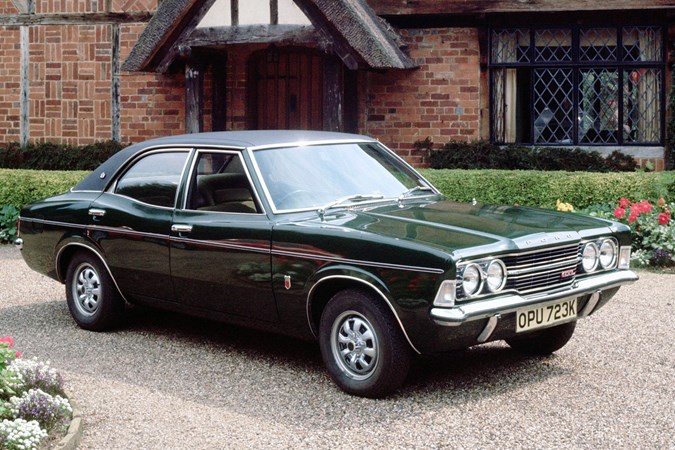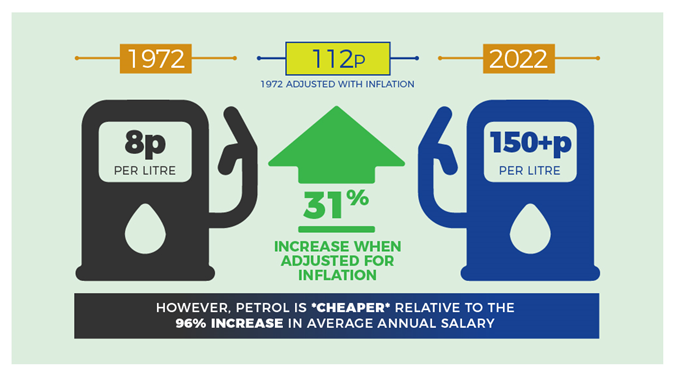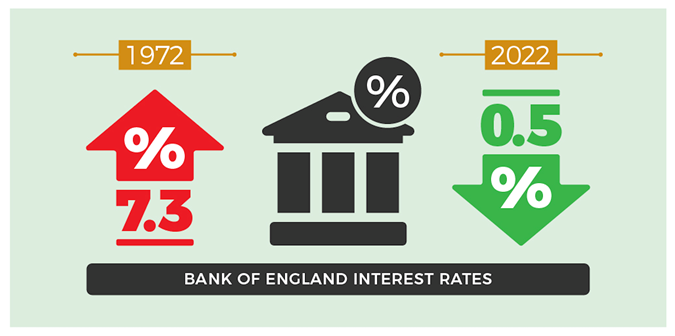Parkers was 50 years old in March 2022, and to mark the occasion, we took a close look at the motoring landscape of 1972 to reveal how much things changed in half a century. Is the cost of motoring really lower in 2022? Or were we enjoying a golden era for drivers in the ’70s, and we just didn’t know it?
When the catchily-titled Parkers New, Used & Trade Car Price Guide was launched in March 1972 for the princely sum of 20p, it was a revolution. The car pricing ‘book’ was so called because it was based in Parker Street in the City of London and it featured line drawings of cars and page after page of valuations. All this data on the pages was collated manually and laid out on a page master for the printer. How times change; today our production is entirely digital – with Parkers.co.uk reaching more than two million users a month who generate more than 250,000 car price valuations.
Helping the great British public buy, sell and run their cars is still at the heart of our DNA with Parkers cars for sale. With spiralling living costs post-pandemic, it’s no wonder that the cost of motoring is the most important issue for car buyers and owners according to our latest research. Topping the list of concerns for 46.7% of buyers is the price of their car. No surprise, given that for most people, a car will be their second most valuable purchase after their house.

What was hot and what was not: 1972 vs 2022
The top-selling car in 1972 was the Ford Cortina Mk3 (above). First shown in 1970, the third generation of the company’s mainstay would end up becoming something of a national treasure, taking more than 10% of the UK market at its peak. In March 1972, an entry-level Cortina would cost you £963, with the most expensive version reaching £1,210. Adjust the Cortina’s prices for inflation between 1972 and 2022, and it would sell for between £13,520 and £16,988 today according to the Bank of England.
Ford’s modern-day equivalent would be the Kuga, whose prices stretched from £27,985 to £39,305. A fairer comparison might have been the best-selling car in the UK at the time, the smaller Vauxhall Corsa (below), which topped the charts in 2021 and costs between £17,380 and £28,905. Britain’s bestseller was cheaper in 1972 than it is today, though not by much.
According to the Office for National Statistics, the average UK salary is now £588 a week (£30,576 per annum) which compares to £21.60 per week (or £1,124 per annum) back in 1972 which, when adjusted for inflation, works out at £15,766. So, cars cost more than double what they did in real terms, but we’re also earning almost double what we were, which means a Ford Kuga is taking a similar chunk of your salary now as your grandfather’s Cortina was back in 1972.

How running costs changed
With rising energy prices and the cost of living crisis a hot topic in 2022, it’s no wonder that the cost of fuel is important to Britain’s drivers: 37.3% of buyers rate this as a primary concern when choosing their new car. Fuel is definitely more expensive now than it was then. Petrol used to cost 8p per litre, or 112p per litre when adjusted for inflation – compared to a heady 150+p today – still a eye-watering 30% difference.
However, modern cars are significantly cheaper to run because of their superior fuel economy. This comparison looks more favourable for today’s driver when you factor in the Cortina’s 24mpg average fuel consumption, compared with the contemporary Kuga’s 40.9-282.5mpg. The 1970s car cost less to fill up, but you’d be doing it much more often.
Other running costs were more expensive in 1972 than they are now, too. All cars were subject to an annual cost of £25 in Vehicle Excise Duty (VED), which equates to £351 in today’s money. Compare that with the £145-£155 you’ll pay to tax a new Ford Kuga, and it doesn’t look quite so appealing. The cost of car insurance has changed beyond all recognition, with an average policy coming in at £460 now compared with £40 in 1972 (equating to an inflation-adjusted £561 in today’s money). Healthy competition and digital innovation are driving down many running costs today.

Buying a new or used car in 1972 vs today
The cheapest new car to buy in 1972 was the three-wheeled Bond Bug at £619, while the most expensive was the Mercedes-Benz 600 LWB for a cool £17,950. A new Ford Escort 1300 GT would set you back £1,083. A canny used buyer could pick up a one-year-old example of the Ford for between £740-£900, a drop in value of a quarter. At the other end of the scale, a luxurious Bentley Corniche weighed in at £13,585 new, and such was the waiting list for one from your local dealer that a 12-month-old example was still valued at £12,800-£14,345.
Buying or financing your new car is cheaper in 2022, too. In 1972, the average car buyer would have either saved up for the car and paid for it outright in cash or taken out a loan based on a Bank of England base interest rate of 7.3%. These days, you can purchase a car far more easily, using PCP or PCH finance deals, all based on the UK’s historically low interest rate of 0.5% (but some manufacturers’ offers can creep up… read the APR small print!).

Car warranties improved beyond all recognition. Typical new-car warranties in 1972 ranged between six months and 6,000 miles and 12 months and 12,000 miles cover – with the shortest listed being just three months long for a Bedford Beagle. These days, three-to-five years is typical, with Kia and MG offering seven years, and Toyota even offering to cover its cars for up to a decade when serviced at its own dealerships. There is significantly better protection in place should the worst happen.
Conclusion
Parkers’ 50th anniversary research revealed significant differences in running and purchase costs 1972 vs 2022. It would be easy to say that motoring is more expensive now than it was back then, but in reality drivers have never had it so good. Once you consider the rise in living standards, with wages almost double what they were when inflation adjusted, those lower prices of 1972 don’t translate into the ‘good old days’ anymore.
The average car may cost twice as much these days, but it takes a similar slice of your income. Fuel is a little more expensive today, but cars are far more economical, cost less to tax, have longer warranties, and are considerably easier to buy and finance in the first place. They are also considerably safer, too – some 7,499 people died as a result of car accidents in 1970, compared with just 1,460 in 2021.
It’s not all good news, though, because Britain’s roads are a whole lot more congested than they were half a century ago. In 1972, there were 12.5 million cars on UK roads compared with 32.6 million cars registered today. There are around 2,300 miles of motorways in 2022 compared with about 1,000 in 1972. So, provision of new roads has not kept pace with the number of cars registered.
Keith Adams, editor of Parkers.co.uk said: ‘I’m an age when I can remember petrol being 35p per gallon, and don’t ever recall it feeling cheap at the time. Seeing these numbers adjusted for inflation backs up that impression potently – we might be paying more for petrol and diesel in real terms now but seeing as the average wage is double what it was then and cars are considerably more economical, it soon becomes clear just how much better we have it today, despite current worries about rising costs. It’s not just fuel either, as it’s the same story for all running costs – aside from purchase price.’
Click on the below to see the infographic in full size
Further reading
Just so you know, we may receive a commission or other compensation from the links on this website - read why you should trust us.




















